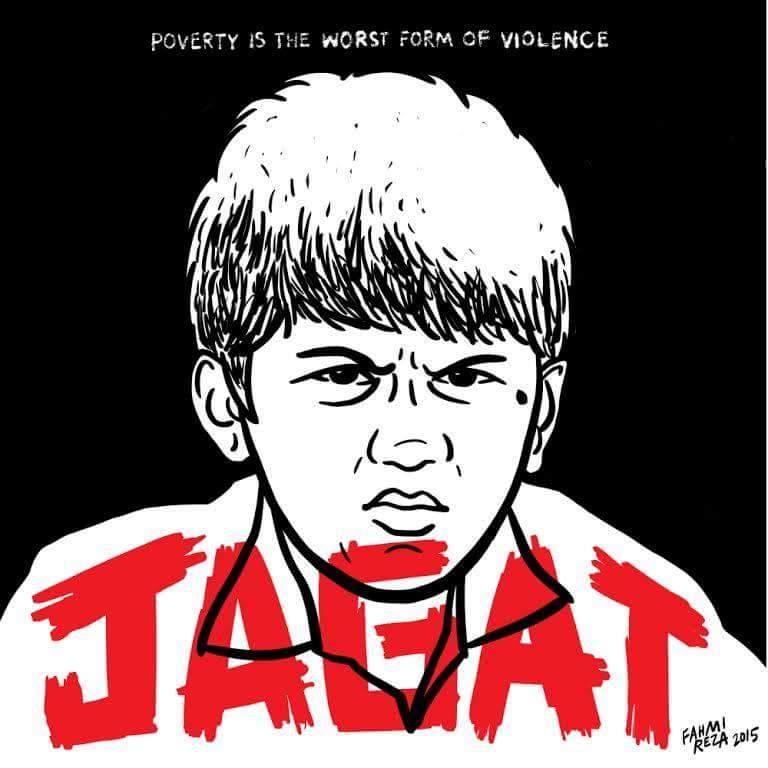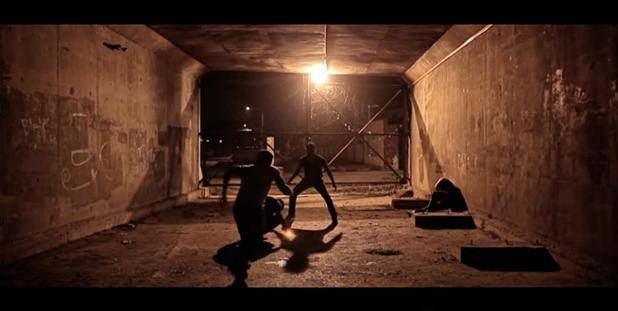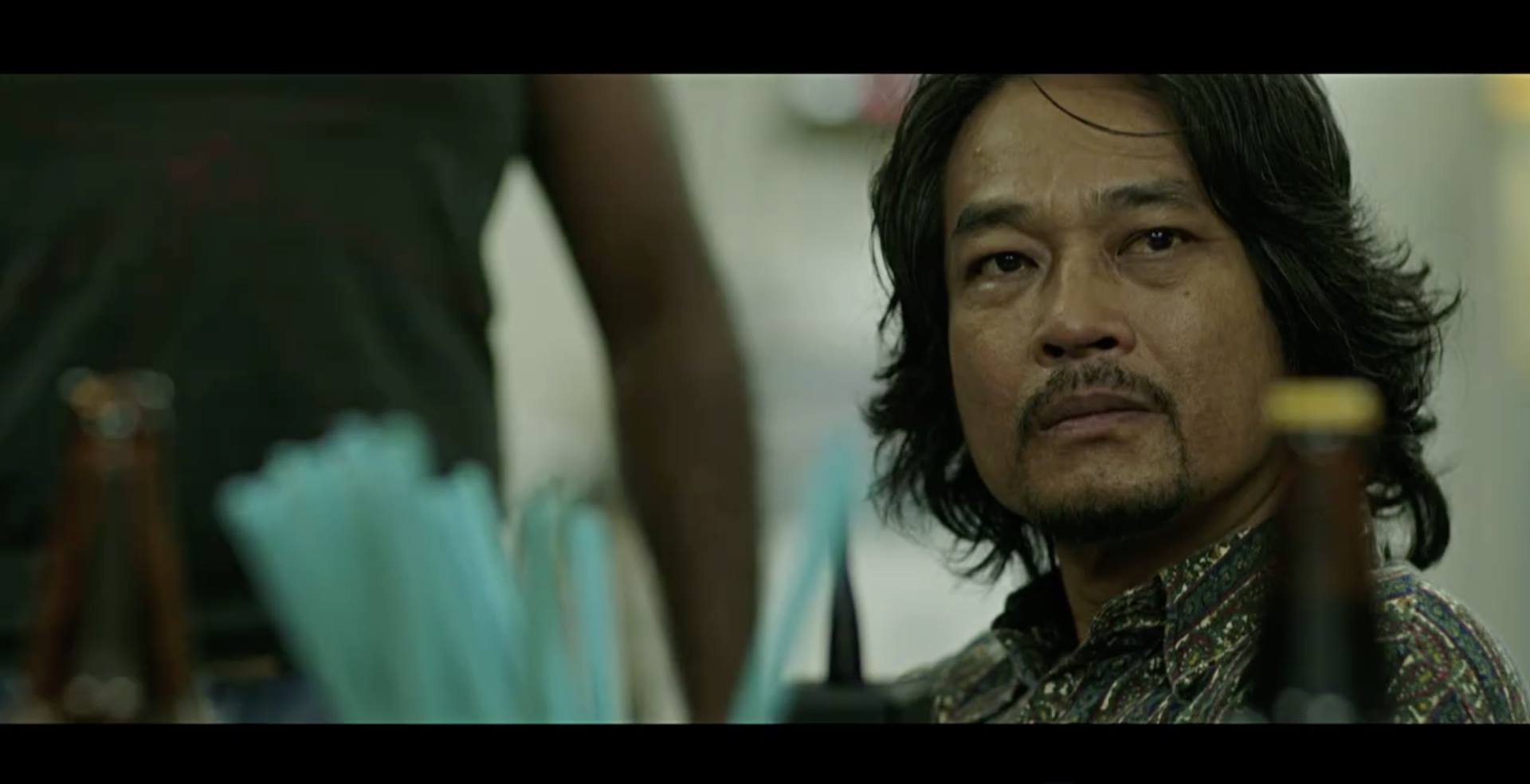Who is “Jagat?”
Skip other details (including permanent urls, DOI, citation information)
: This work is licensed under a Creative Commons Attribution-NonCommercial-NoDerivatives 4.0 International License. Please contact [email protected] to use this work in a way not covered by the license.
For more information, read Michigan Publishing's access and usage policy.
Jagat (2015) is a Malaysian produced, thought-provoking Tamil film, directed by Shanjhey Kumar Perumal. The word “jagat” originates from a Malay term “jahat,” which means bad or evil. Set in the early 1990s, Jagat captures the struggle of the rural Indian minority who had to survive after being forced out from their estate plantations due to the decline in Malaysia’s rubber production.[1]
The film revolves around the life of Appoy, a 12-year-old protagonist who is bright but mischievous. Appoy is trapped in the expectation of his uncompromising father, the rigid schooling system, and the bad influence of his criminal uncle, Mexico. The only soothing character in Appoy’s life is Bala, his other uncle who shares his wisdom with him, but succumbs to drug addiction and finally dies due to intoxication.
The bullying and punishment that Appoy receives in school, as well as constant parental pressure at home, brings him closer to his criminal uncle, Mexico, whom he thinks is influential and powerful. But what Appoy does not know is that Mexico himself joins the criminal underworld by chance. Mexico turns out to be a notorious henchman of a local gang, only because he does not have another option.
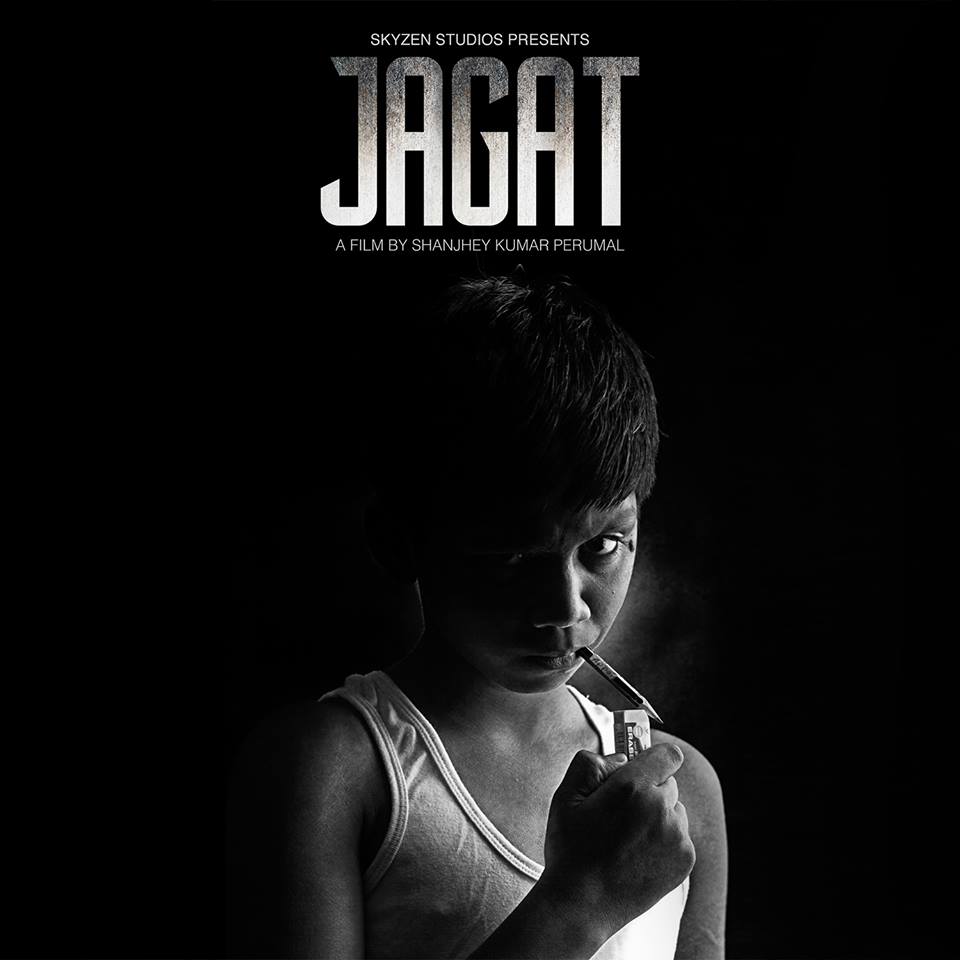
While the plot of Jagat mainly focuses on the life of Appoy and the struggles of his family, the film makes a huge contribution, particularly in seizing the plight of the Indian minority in Malaysia. The film critically highlights several issues, including poverty, poor treatment and lack of support towards the Indian minority and their vulnerability to the effects of crime.
The marginalisation of the Indian minority, as brutally exposed by Jagat, can be traced to British Colonial rule in Malaya. The British adopted a divide and rule policy, which impacted the Malays, as well as the Chinese and Indian immigrants, who were geographically, socially and economically segregated.[2] This is the root of the formation of a culturally pluralistic society in Malaysia, where nation-building remains an ongoing struggle to this day. Skewed development and wealth distribution policies, ethnocentrism and ignorance further marginalise the members of these minority groups. The situation also creates conflict between people of different ethnicities in the country.[3]
Because crime is socially constructed, underprivileged and socio-economically disadvantaged minority peoples are more prone to it.[4] In Malaysia, crime is an “Indian problem,” that is statistically reflected in the reported crime cases involving gang related activities.[5] The number of Indian ethnics who are criminal-underworld gang members totals 28,926, the highest in the country.[6] This can be attributed to the economic deprivation of Indian minorities, a situation critically addressed in Jagat.
Besides addressing the socio-economic issues of Indian minority groups, the strength of Jagat lies in the cinematic realism of the film. Such is evidenced in the casting, the portrayal of the criminal underworld, identity, culture and the representation of women within a patriarchal structure of the Indian community. For example, the casting of Jagat was carefully conducted by taking into consideration the physical characteristics of the actors. Director Shanjey Kumar Perumal purposely selected cast members with darker skin complexion, to represent the working class Indian minority, which is the opposite of the obsession for fairer skin actors found in many mainstream Tamil and Hindi films.[7]
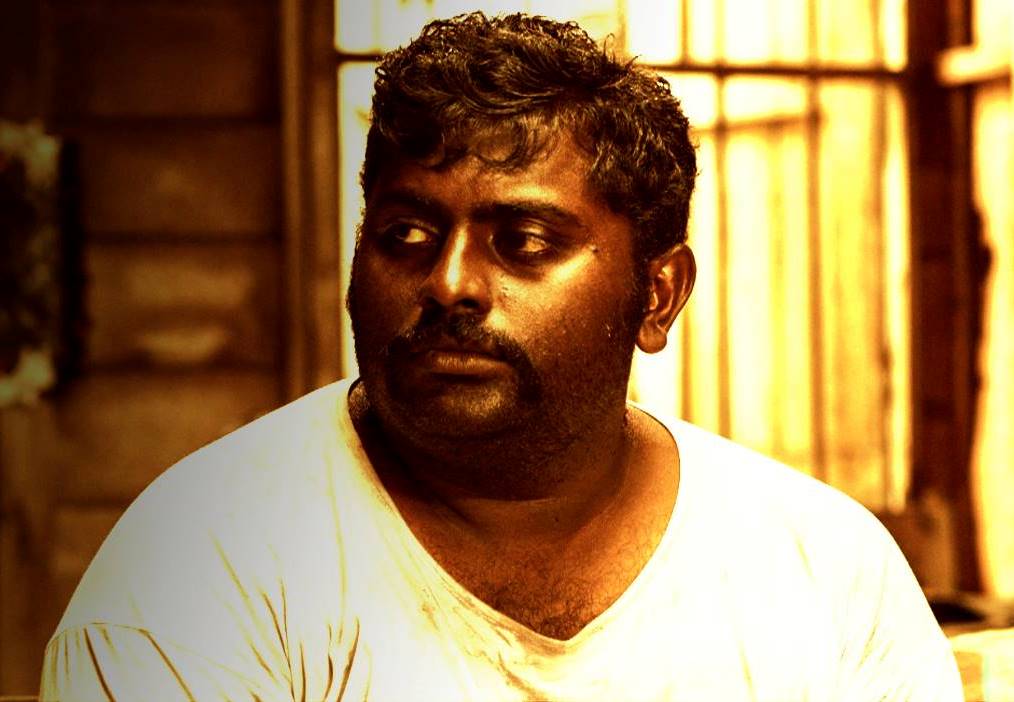
Jagat also successfully portrays the local criminal underworld gangs and their members in great detail, including their conversations and routine practices. The film also focuses on intra-gang and inter-gang conflicts. The film depicts Indians as henchmen in the criminal underworld, working for Chinese ethnic gang leaders. Over the years, this sociological trend has evolved, with Indians assuming more central roles as gang leaders, while the Chinese have become masters and financiers of the gangs.[8]
Jagat is brave, expressive, real, and sincere. The film is a story from the heart. It poses the harsh reality of the Indian minority in Malaysia in a compelling new way. After watching, the spectator is encouraged to reflect upon the question, Who is “jagat”?
Author Biography
Dr. Nurzali Ismail is an academic at the School of Communication, Universiti Sains Malaysia (USM). His current research revolves around youth, media and crime.
Notes
Astro Awani, "Jagat an Eye Opener for Local Film Industry – Shanjhey," Astro, (2016), http://english.astroawani.com/entertainment-news/jagat-eye-opener-local-film-industry-shanjhey-116746.

Charles Hirschman, "The Making of Race in Colonial Malaya: Political Economy and Racial Ideology," Sociological Forum 1, no. 2 (1986): 330-361.

Kee-Cheok Cheong, Shyamala Nagaraj, and Kiong-Hock Lee, "Counting Ethnicity: The National Economic Policy and Social Integration," Malaysian Journal of Economic Studies 46, no. 1 (2009): 33-52; Parthiban S. Gopal and Premalatha Karupiah, "Indian Diaspora and Urban Poverty: A Malaysian Perspective," Diaspora Studies 6, no. 2 (2013): 103-122.

Satyanshu Mukherjee, "Ethnicity and Crime," Trends and Issues in Crime and Criminal Justice 117 (1999): 1-6.

Amar S. Sidhu, "The Rise of Crime in Malaysia: An Academic and Statistical Analysis." Journal of the Kuala Lumpur Royal Malaysia Police College 4 (2005): 1-28.

The Star, "Over 40,000 Members in 49 Gangs Involved in Firearms, Murder, Drugs and Extortion, Says Home Ministry," The Star Online, (2013), http://www.thestar.com.my/news/nation/2013/08/29/40000-members-in-gangs-say-home-ministry/#7P7qAYwOUt8G3Oea.99.

Andrew C. Willford, Cage of Freedom: Tamil Identity and the Ethnic Fetish in Malaysia (Singapore: NUS Press, 2007).

Kong S. Hoh, "Indian Gangs Originated from Chinese Triads,” The Sun, (2013), http://www.thesundaily.my/news/808352.



